A “hard landing” would be tough for China. But it would still mean economic growth, if very slow growth by Chinese standards. At worst, it would mean stagnation. But now, evidence is piling up that the economy is actually shrinking.
There is practically universal agreement outside official Chinese reporting that the economy hasn’t been growing at anything near the official and for most countries awesome rate of 7% in the last two quarters.
In the US, we don’t know what our quarterly GDP growth is either. We get the first estimate, which may be negative, and then the second estimate, which may be worse. Then the third estimate may suddenly be positive, by which time people stopped paying attention. GDP continues to be revised years later. It’s tough to measure a big economy.
But China doesn’t even revise its GDP growth number. It comes out shortly after the quarter ends and stands as rock-solid as the Communist Party itself. And it always matches or exceeds the decreed target.
Hence no one believes it.
Yang Jian, managing editor of Automotive News China, who has been fretting about plunging auto sales, put it this way:
[E]ven some Chinese government officials remain wary of the reliability of economic data released by the National Bureau of Statistics.Li Keqiang, now Chinese premier, was one of them. When he was head of the local communist party in northeast China’s Liaoning province ten years ago, he invented his own method of gauging the national economy’s performance by relying on three variables government statisticians cannot easily inflate – electricity consumption, rail cargo volume, and bank lending.
Li’s economic model has been widely adopted by researchers these days. In the first half of the year, except for bank lending, electricity consumption and rail car volumes across China both declined….
So how bad is the economy?
If bank lending, the only still growing element of the three, is focused on throwing more money at zombie companies to keep them afloat, on bailing out toxic debt by replacing it with even more new debt, and on creating even more overcapacity and empty buildings that will never earn the returns to service the debt, well, then it’s not adding to economic growth in a sustainable way either.
This is how New York Times reporter Michael Schuman described the now failing industrial principles of China via cement maker Lucheng Zhuoyue in Changzhi, a city of three million people:
Changzhi and its environs are littered with half-dead cement factories and silent, mothballed plants, an eerie backdrop to the struggling Chinese economy.
Like many industrial cities across China, Changzhi, which expanded aggressively during the country’s long investment boom, has too many factories and too little demand. That excess capacity, many economists indicate, will have to be eliminated for the Chinese economy to return to healthy growth.
But rather than shut down, Lucheng Zhuoyue and other Changzhi companies are limping along in a kind of march of the undead.
They’re losing money. Customers are disappearing. Yet, these already over-indebted companies are borrowing even more to stay afloat and keep going.
“If we ceased production, the losses would be crushing,” Lucheng Zhuoyue’s general director Miao Leijie told the New York Times. “We are working for the bank.”
With ghost cities and unneeded factories dotting the land, construction projects have been scaled back, and demand for cement has collapsed. Hence rampant overcapacity.
A couple of years ago, the new government pledged to restructure the economy, weed out overcapacity, take the losses where necessary, and transition the economy to high-value manufacturing, innovation, and services. Companies would be allowed to fold. And their debts would be allowed to default.
But when economic growth spiraled down, reform efforts stopped. Now the government and its state-owned megabanks keep these companies alive by rolling over their debts, restructuring loans, and extending new credit and other aid to keep the old debt from blowing up.
Good for a vibrant economy? Not so much. And the banks that extended these now toxic loans?
The four largest state-controlled megabanks, after years of double-digit profit growth, have reported almost no year-over-year profit growth in Q2, with the best performer being Bank of Communications at 1.5%, the Wall Street Journal reported. A sign that banks are starting to account for some fragments of the massive toxicity hidden in their loan books:
Now, trophy investments in largely empty municipalities known as ghost cities and oversupplied infrastructure aren’t delivering promised returns. Meanwhile, debtors face overcapacity in several industries and slower demand, while land sales are hit by a weakened property market.
This entire system, a dominant part in the Chinese economy, and now in turmoil, hasn’t entered the officially decreed GDP number. And there is another big measure that shows just how fast the economy is slithering into trouble: new vehicles sales.
The auto industry in China impacts the economy in multiple ways, from industrial production, finance, and services to retail sales. Only a small fraction of vehicles are imported. The rest are manufactured in China.
New passenger-vehicle sales in China had a positive correlation with economic growth: sales were growing slightly faster than official GDP, year after year, according toAutomotive News China. For example in 2014, new passenger-vehicle sales, which were already slowing, grew 9.9% while the overall economy officially grew 7.4%.
But now that correlation has reversed.
New passenger-vehicle sales, though already trending down, were still growing 9.4% year-over-year in Q1, according to the China Association of Automobile Manufacturers. Then they began to sag. In April, sales grew only 3.7%, in May 1.2%. In June, sales actually fell 3.4%. In July they plunged 6.6%!
Either auto sales have by sheer magic decoupled from the economy, or the official 7% GDP growth is a political delusion, and the economy isn’t just slowing down further to a growth rate of 6.5% or 5%, or even a “hard landing” with a growth rate of 2% or 1%, or even a flat quarter, but is actually shrinking.
That’s what hard-to-fudge measures such as auto sales are saying.
Automakers, like cement makers before them, are responding with production cuts and a price war. And there is no relief in sight, as SAIC, partner of GM and Volkswagen, and China’s largest automaker, warned: “the domestic market situation in the second half of the year remains grim.”
 Peter Tertzakian: The U.S. and Saudia Arabia are like two playground bullies fighting over one swing. The results are predictable: No one will be allowed to swing.
Peter Tertzakian: The U.S. and Saudia Arabia are like two playground bullies fighting over one swing. The results are predictable: No one will be allowed to swing.




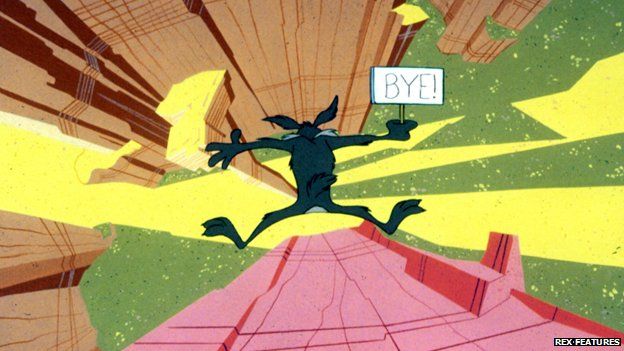
















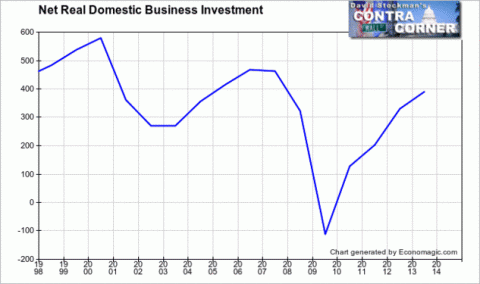



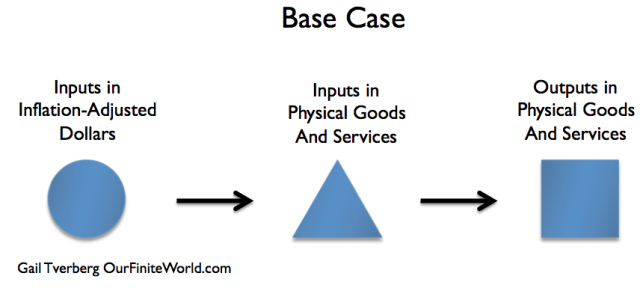
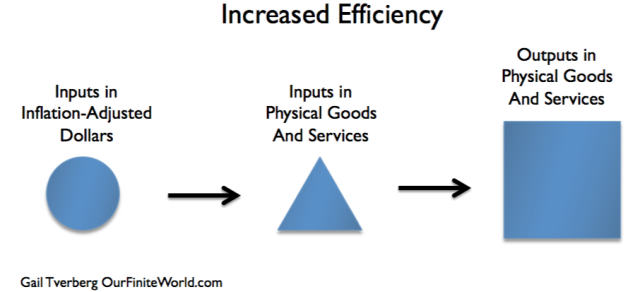
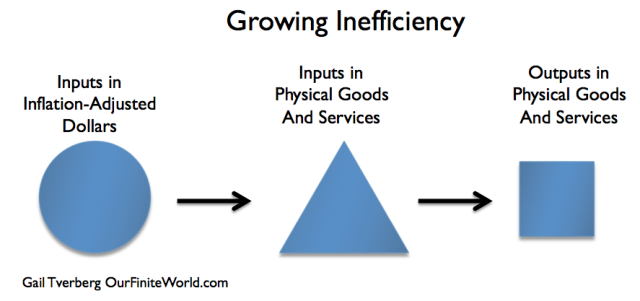
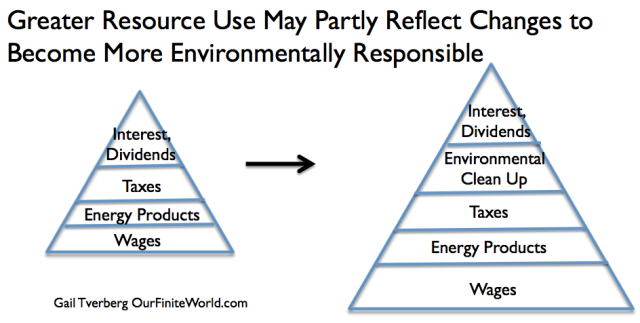



When GDP is calculated from synthetic or debt based growth meaning it wasn’t demand based I would not consider that as “real” growth or accurate GDP.
Let’s see the GDP based on demand growth!
3% China 1% US !
For China’s macros to flash red, things must be either far worse than we think, going out of control or a combination of both.
As an analyst for HSBC said years ago, the Chinese economy behaves according to a postulate to Heisenberg’s Indetermination Principle: the closer you observe it, the more it changes its behavior.
As serious analysts and savvy investors started to rely on “lesser” indicators, such as containerized freight, rolled steel consumption etc these started changing their behavior to fit the “7% GDP growth at least” model, nevermind how they behaved previously.
If China’s crack statistics team cannot artificially prop up (on paper) car sales, electricity consumption and cement demand it means either things are so bleak they can at most give the illusion of a soft landing or that panic has taken hold in Beijing.
It’s useless to beat around the bush: this thing will have ripercussions all over the world, and not of the good kind.
Beijing has staked too much on the “social peace through prosperity” model to allow the much needed correction to unfold without putting up a desperate fight.
We’ve already seen what can only be described as panic at the PBOC: the yuan has been devalued and revauled more times in the past month than in the previous six years. While the BOJ and the ECB are fully committed to turning their currencies into monetary laughing stocks to both prop up exports and write off debts through devaluation, the PBOC is split between too many directions. Yes, a devalued yuan would be good for exports and domestic debt servicing, but what about dollar denominated debt issued by Chinese companies? What about price inflation? One of the unwritten rules in China is that food prices must stay as stable as possible: Chinese consumers would take to the streets if the price of staples such as rice, palm oil, pork and cabbages increased at the same pace as food increased in Europe and the US over the past decade. Finally, what about China’s not so thinly disguised dream of replacing the yen and the euro as a reserve currency with the yuan?
And finally what about Western companies, which have reaped such fantastic profits from their Chinese operations? I am sure they’ll be able to keep the champagne flowing a while longer (my money is on their stocks not starting suffering seriously until 2016, though the present conditions of instability will remain) but as I always say, sooner or later you have to either pay the bill or find “someone” to pay it for you.
“…this thing will have ripercussions (sic) all over the world, and not of the good kind.”
I think the effect to the global economy will be much milder than predicted. If China collapses, the West will go whistling past the graveyard knowing China isn’t a significant consumer of finished, western goods. Sure, a few raw material suppliers like Oz will be screwed but a hammered China will mostly mean lower wages and production costs as China falls back to the “good old days”.
Just one word: profits.
For large Western, Korean and Japanese companies getting over 20% of their profits from the Chinese market is the norm. BMW, Hitachi, Apple, Samsung… they are all reaping fantastic rewards through their local joint ventures and direct exports. With Western consumers and CAPEX stretched as thin as humanely possible, China has saved corporate balance sheets from having to deal with stagnating or even declining revenues.
There’s a very good reason why Tim Cook, in what looked like a desperate (and possibly illegal) attempt to bring AAPL back to over US $100, didn’t speak about the North American or European market but about China.
There’s also the issue of dumping. So far China has contented herself with dumping a small part of her excess capacity on export markets. But as domestic demand for rebar, rolled steel, cement, glass panes, escavators, lorries etc slows down, they are bound to get into high gear just to keep the factory doors open.
In the first half of the year, Chinese steel exports were superior to the whole Japanese production: in spite of everything, Japan is still number two in the sector. The West, as usual, is shrugging it off because these exports chiefly went to emerging markets such as Vietnam, South Africa, Indonesia, Peru etc.
But China has the EU worried enough to issue warnings about dumping in all strategic sectors, from rebar to shipbuilding. It may be too late: the European solar and wind power boom was wholly built in Chinese factories: taxpayer money went into subsidizing companies which acted as mere middlemen for manufacturers located in China’s industrial cities.
I remember hearing in 1990 how Japan, which until a few years before could do no wrong, just didn’t matter anymore. The ripples sent by the cataclismic crash of the zaitech system and the far more pernicious ensuing actions of a panic-stricken BOJ have been with us for the past generation. Our monetary policies have largely been patterned after the Japanese’s desperate attempts to prevent liquidation and reinflate bubbles.
If anything, China is bigger than Japan. And God only knows what the central planners in Beijing will come up with and how those actions will influence worldwide economi policies for another generation.
Many Chinese stock market investors have been buying stock with money borrowed against their real estate. What could go wrong with that?
According to the Economist, 200 million Chinese are living on less than $1.25 dollars a day. They are probably not buying new Buicks.
Meanwhile, money is pouring out of China. Take a look at this one year chart:
http://www.tradingeconomics.com/china/capital-flows
Yep, Sum Ting Wong.
A couple of years back, my sister was trapped in a hotel in Guangdong, because a Taiwanese factory owner shut his factory doors without bothering to tell has hundreds of workers. The streets were packed with angry, suddenly jobless workers. It was not safe to go out that night.
In February 2015, old China hand Ann Stevenson-Yang estimated Chinese growth as flat to negative. Enter: ‘Has China’s Hard Landing Already Arrived’ and look for her pic on You Tube video.
The MSM have got a problem because after lapping up the Seven Percent Solution until pretty much last week- they now have to catch up and reverse themselves- as though it could go from 7 to zero in a few days!
A recent comment from Ann S-Y: ‘We are amazed how many analysts have bought into the idea of Chinese Exceptionalism’
To those who are still in awe of the CCP- remember that the other China, Taiwan, has an average income about 300 % that of the mainland. (2014 about 21, 000 versus 7,000. Source: IMF, World Bank and UN similar.)
If the Chinese Nationalists had won the civil war instead of Mao’s Communists, China would have become the world’s largest economy decades ago.
Sadly, the US government on the advice of the State department handed over China to Mao’s ‘moderate’ socialists. Former ‘friend’ Chiang got to escape to Formosa.
“To be an enemy of the United States can be dangerous, to be a friend is fatal”
Henry Kissinger.
Thanks I didn’t know that although I knew that they thought Castro was a moderate at first
Really?
Chiang and his gang were crooks, through and through. The reason Taiwan has done well is that all of a sudden it had a huge influx of capital and educated business people who suddenly found them selves having to actually get stuff done or the Taiwanese would have sent them off. Taiwan had also been a Japanese colony for 50 years so it had picked up a few tips along the way. And remember the population of Taiwan is only about 1/60th of China’s, so the per capita impact was huge.
It is a bit like if you were to take all the top business people of the US (say about 100,000 of them) and all the accumulated financial assets, and the cream of the US military and move them in one fell swoop to Puerto Rico, leaving next to nothing in the rest of the USA (and have what was left trashed in the process) . Give Puerto Rico a few years and it would be doing fine. The US would probably take a while to recover.
I was in China about 6 months ago and have visited many times over the last 30+ years. The achievements they have made have been incredible, there is no doubt. BUT to my eyes much of what they have built is on pretty shoddy foundations. You simply can not effect real change in such a short time (a generation and a half – maybe) without taking a hell of a lot of shortcuts, many of which have the capability of coming back to bite you big time.
With a declining workforce size, aging population, capital flight (big time), and rising costs China seems to have passed over the crest of the industrial growth hill without a lot of gas left to try and get over the hill to a transition to a service based economy.
It’s going to be interesting … and as pessimistic as I am, China still looks awesome compared to India – now that is a permanent basket case.
Yes, they were crooks, as in past tense- it was two- thirds of a century ago. They’re dead.
There was essentially zero manufacturing base in Formosa ( Taiwan) at the end of WWII. By the way if you are an old China hand you will know that in Taiwan the period is not usually brought up in polite conversation- such was the chaos and mayhem.
And whatever the failings of the KMT, no one was in the same league as psychopath Mao, and nothing in the island’s contemporary history equals the Cultural Revolution.
I do not disagree that Taiwan would be a likely magnet for entrepreneurial Chinese fleeing communism- although I do not see how that falsifies my assertion that Taiwan has done much better than the mainland because it isn’t Communist.
Moving on to now.
The problem for mainland China is not new- it is the same problem every former Communist state has faced once it gets fed up with Communism.
How do you get the Party to relinquish power? Ideally the transition comes with a transitional figure, like Gorbachev. Less ideally it comes as in Romania.
But that is the problem, how do you get rid of a Party that began as something for the people and ended up as a privileged ruling class, along the lines of pre-revolutionary France. (80 % of China’s health care budget is spent on about 8.5 million CCP bureaucrats and their families)
If this class could be persuaded to stay in castles, they could be tolerated but they are the managers and beneficial owners of the State Owned Enterprises- the mill stones around the economy’s neck. It was these that that the CCP was trying to prop up at absurd valuations or PE’s ( 60: 1) when it began its campaign to get the working class to invest the hard- earned savings of generations.
As to India- it is a puzzle. Does it deserve some kind of handicap because of its past- hundreds of languages, castes, and until the arrival of the British not actually a state but many independent states?
However if you told me that one was going to have a revolution- I would pick China.
What i wonder is why zero pct interest rates in USA, EU, Japan, UK and NIRP in Scandinavian countries and Rolling over of bad debt in China is not seen as state support. We were supposed to life in a world of free trade without governmental interference. Export subsidies or import tariffs are forbidden but zero pct interest loan or even negative are seen as supporting the economy in general but who benefits the most of these low interest rates. Companies who cannot pay and should go belly up. Why not subsidies these companies and raise the interest rates. Realize in all countries above mentioned the inflation for the consumers is still above zero if you count house appreciation and stock market appreciation into the game.
As part of the huge program tp clean up the air, the government here in China closed many inefficient factories. Many others had their hours of operation curtailed. This would explain some of the drop in electricity consumption. It has been working. The air is noticeably cleaner in northeast China this summer.
If you live in China, you notice the advertising everywhere for investments at rates of 4-12%. These are investment trusts. They usually are for new construction, but they can be for anything. They are a parallel channel to traditional banking and the stock market. They cannot be tracked very well.
This could be where some of that money is.
China still has huge infrastructure needs and should use QE/ Central Bank tactics to directly stimulate this sector.
Key example: massive needs for clean drinking water. That means canals to transport water from the northeast to the coastal cities and interior. Massive desalinization as well.
Such projects will soak up huge capital needs and labor.
Stimulating and accelerating overseas development programs will do much the same.
Furthermore, the leadership will have to bite the bullet and foreclose on failed residential towers and begin conversion to social housing, which will be a very positive way to reduce popular tensions.
Managing to deflate the equities bubble is a necessary step as well. The margin for error is getting pretty small, and China has to take bold steps and stop looking to Goldman Sachs for guidance.
Yes, with a focus on low cost solar panels to replace coal fired electric power generation, standard electric power consumption will show a decline. With Xi’s reversal of the ‘one child policy’ to that of a population growth policy, the ‘ghost cities’ will be populated in a decade or so. As you say, clean water is of a major importance and will put many to work. Curbing ‘short selling’ was a major boon to halting the stock market decline, however the West seems to have found a way around that somehow (but Xi, don’t make naked shorting legal again !!! ) as the market has continued down since then, but with a P/E ratio of 59 things were ‘over-valued’ ! so not too unexpected. Anyway, keep up the good work China ! and focus on cleaning up pollution and stopping environmental destruction, and respecting The People, because The People are the ones who Do Everything !!!
Lars, one thing: power consumption includes power from all sources, including solar. So shifting from coal-fired power plants to solar power plants or distributed solar generation is great, and China is making huge progress in that respect, but it doesn’t impact overall power consumption.
Power consumption is a measure of how much power is being used by society, regardless of where it comes from.
Hard landing only occurs when I am no longer seeing:http://news.yahoo.com/chinese-tourists-unfazed-currency-fall-market-turmoil-054202915.html
I’m American not stupid good by GM and china ,,,,,,Eat your
Buicks as I won’t be buying china products ,,,, Nothing has changed ,,,, Don’t look to us to save you,,,,,, GM you make
me SICK !!! GO BROKE ,,,, GOOD BY !
HARD WORKING AMERICAN !!
Wolf, Why did you delete my post? Is it because truth hurts? If Wolf Street is meant to be a balanced “Howling about Business and Finance” then all factual views should be published. Otherwise, how can anyone take your website seriously?
It was offensive and aggressive toward the commenter you replied to, and falsely so, and solely for the purpose of promoting your notions and links that were totally unrelated to the article and to the comment to which you replied.
The comment section is like my living room. You’re welcome anytime. But it’s not a free-for-all.
Wolf, Frank Holmes, CEO and Chief Investment Officer of U.S. Global Investors disagrees with your take on China.
He says “We believe the China region remains one of the most compelling growth stories in the world and continues to provide exciting investment opportunities. For more see link below
“China’s Economy Is Undergoing a Huge Transformation That No One’s Talking About.”
http://www.321gold.com/editorials/holmes/holmes090215.html
Matt, generally, a lot of people disagree with me (and with each other). That’s what makes a market.
Holmes actually agrees with me on many points, including the painful transformation China is undergoing. He too is worried about China, and he’s going to cash in his China fund, thus pulling his fund’s money out of China: “we’ve raised the cash level in our China Region Fund (USCOX), and after the dust settles….”
And yet, he sells investment services. He has to talk up his book. I don’t have to talk up my book because I don’t sell investment services.